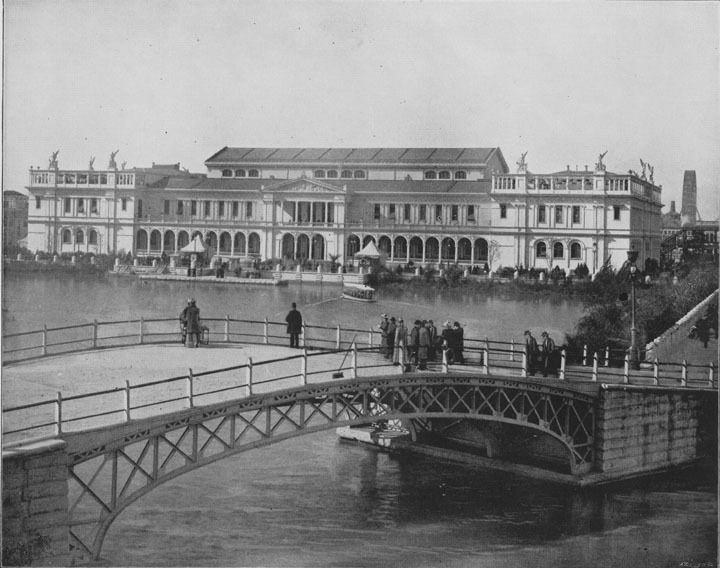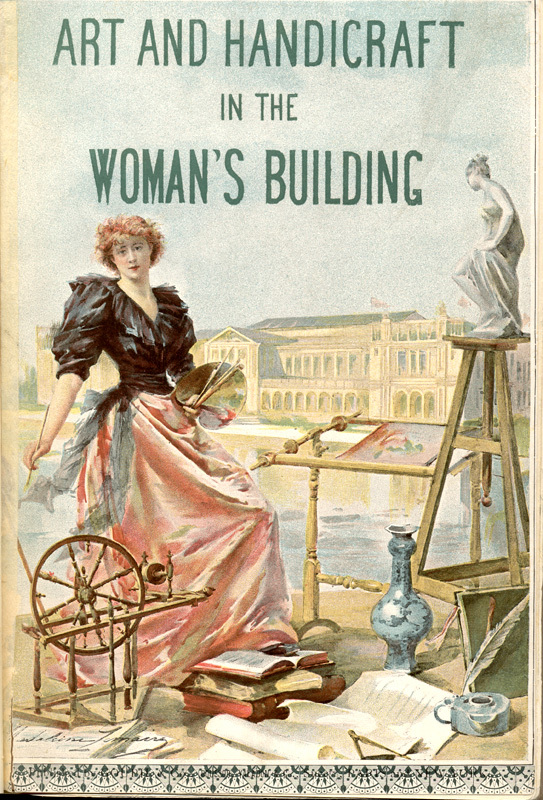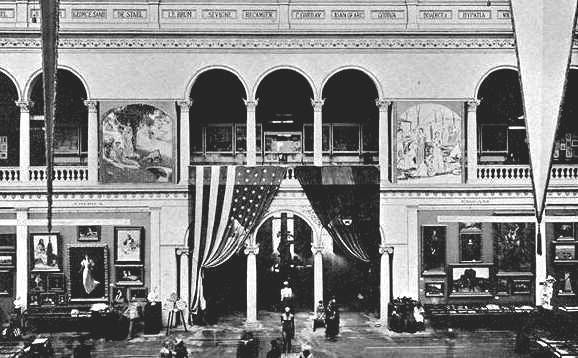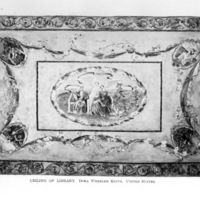The Woman's Building

The Woman's Building.
Image courtesy of Education Art Series, N. D. Thompson Publishing Company, St. Louis, Missouri, 1893.

Another view of the Woman's Building.
Image courtesy of
The Woman's Building was one of the main projects for the Lady Board of Managers. Designed by Sophia Hayden, it had exhibition spaces, offices, and meeting rooms. It served as a display of feminine works as well as a hub for women's activities during the fair. [1]

This is the fist page of a publication detailing some of the art in the Woman's Building. The image itself shows some of the changing ideals for women, as it depicts a woman with books at her feet who is engaged in various tasks. While it doesn't completely reject previous notions of femininity since it contains art and education, two realms deemed fit for women, it does extend the bounds of female domesticity a bit.
Image courtesy of Radford University.

A view inside the Woman's Building, showing some of the various artwork adorning the walls.
Image courtesy of UC Riverside, California Museum of Photography.

A view of the inside of the Woman's building. It shows the large quantity of paintings displayed, as well as the feminine details of the building.
Image courtesy of http://arcadiasystems.org/.

This is an image of the ornately decorated ceiling of the library inside the Woman's Building. In order to allow for easy viewing, there was a mirror in the center of the room to reflect the ceiling.
Image courtesy of Art and Handicraft in the Woman's Building of the World's Columbian Exposition, Chicago, 1893. Chicago and New York: Rand, McNally & Company, 1894. pp. 136.
The Library
Within the Woman's Building there was a library devoted to materials written by women. Consisting of books from all over the country, the collection served to showcase the prolific nature of women writers. It rejected masculine influences in its architecture and decor as well, instead being set up to give off a cozy and home-like atmosphere, as was to be expected of a feminine space during this era. [2]
[1] Wanda M. Corn. Women Building History, 76-86
[2] Sarah Wadsworth and Wayne A. Wiegand, Right Here I See My Own Books, 10, 23, 203.